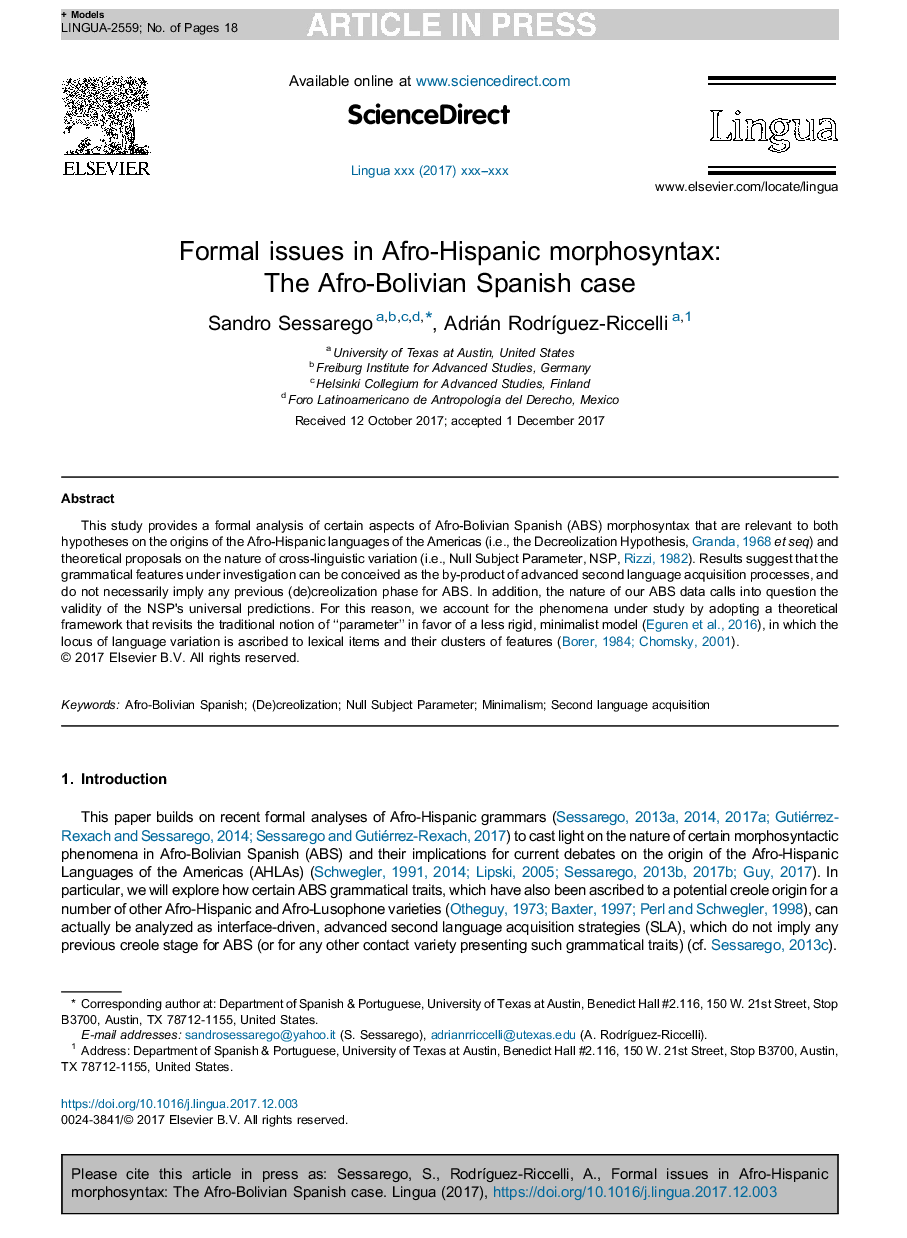| Article ID | Journal | Published Year | Pages | File Type |
|---|---|---|---|---|
| 7298433 | Lingua | 2018 | 18 Pages |
Abstract
This study provides a formal analysis of certain aspects of Afro-Bolivian Spanish (ABS) morphosyntax that are relevant to both hypotheses on the origins of the Afro-Hispanic languages of the Americas (i.e., the Decreolization Hypothesis, Granda, 1968et seq) and theoretical proposals on the nature of cross-linguistic variation (i.e., Null Subject Parameter, NSP, Rizzi, 1982). Results suggest that the grammatical features under investigation can be conceived as the by-product of advanced second language acquisition processes, and do not necessarily imply any previous (de)creolization phase for ABS. In addition, the nature of our ABS data calls into question the validity of the NSP's universal predictions. For this reason, we account for the phenomena under study by adopting a theoretical framework that revisits the traditional notion of “parameter” in favor of a less rigid, minimalist model (Eguren et al., 2016), in which the locus of language variation is ascribed to lexical items and their clusters of features (Borer, 1984, Chomsky, 2001).
Related Topics
Social Sciences and Humanities
Arts and Humanities
Language and Linguistics
Authors
Sandro Sessarego, Adrián RodrÃguez-Riccelli,
